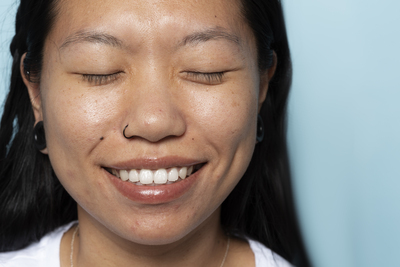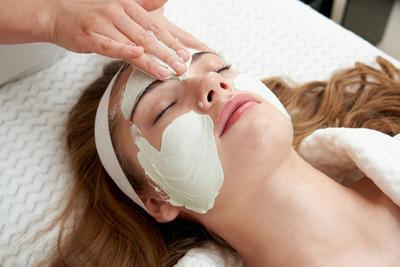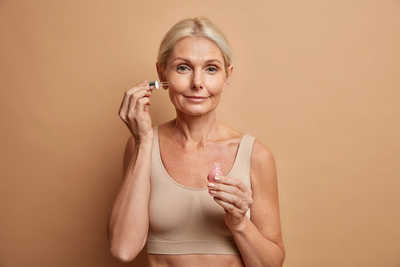Dry vs. Dehydrated Skin: Why You Might Be Treating the Wrong Problem
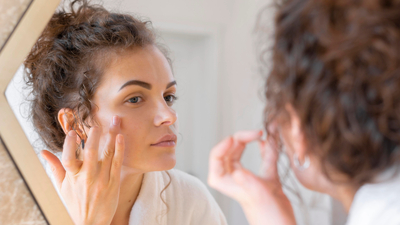
Do you ever feel like your skin is tight, flaky, or dull no matter how much moisturizer you apply? You’re not alone — but here’s the catch: what you think is dry skin might actually be dehydrated skin.
These two terms are often used interchangeably, but they mean completely different things. Using the wrong products for your actual concern can make your skin even worse — leading to irritation, breakouts, or a damaged barrier.
Let’s break down the real science behind dry and dehydrated skin, what causes each, how to tell the difference, and how SkinBuddy helps you find skincare that actually fixes the problem.
What’s the Difference Between Dry and Dehydrated Skin?
At first glance, both conditions look and feel similar — tightness, flakiness, dullness — but the root causes are entirely different.
-
Dry skin lacks oil (lipids).
-
Dehydrated skin lacks water.
According to ScienceDirect, dry skin (or xerosis) is primarily caused by reduced sebum production and a deficiency in natural lipids that form the skin’s protective barrier. Without enough oil, moisture escapes easily, leading to roughness and flaking.
Dehydrated skin, on the other hand, can happen to any skin type — even oily or combination. It’s a temporary lack of water in the upper layers of the skin, often due to weather, over-cleansing, or using harsh products.
A 2019 review published in Clinical, Cosmetic and Investigational Dermatology emphasized that while both conditions affect the skin barrier, they require different treatment strategies.
Dry Skin: What It Really Means
Dry skin is a skin type, not just a temporary condition. It’s determined by genetics and is characterized by underactive sebaceous (oil) glands.
Common Signs of Dry Skin
-
Rough, flaky texture
-
Persistent tightness (especially after cleansing)
-
Small, invisible pores
-
More visible fine lines
-
Makeup clings to dry patches
What Causes Dry Skin?
-
Genetic predisposition
-
Aging (sebum production naturally decreases)
-
Harsh weather and low humidity
-
Overuse of strong cleansers or exfoliants
-
Certain medications (like diuretics or retinoids)
A study published in the Indian Journal of Dermatology noted that chronic dryness is associated with impaired skin barrier function and reduced lipid levels — meaning your skin simply doesn’t produce enough oils to trap moisture.
Dehydrated Skin: The Misunderstood Skin Condition
Dehydrated skin is a temporary state, not a fixed skin type. It occurs when the skin lacks water — even if it produces plenty of oil.
That’s why oily or acne-prone skin can still feel dry and tight.
A 2024 survey on ResearchGate found that over 65% of dermatologists reported patients misdiagnosing dehydration as dryness, leading to improper product use and persistent irritation.
Common Signs of Dehydrated Skin
-
Tightness that worsens throughout the day
-
Dullness or lack of glow
-
Fine dehydration lines (especially around eyes and mouth)
-
Increased oiliness and breakouts (as skin overcompensates)
-
Makeup separating or flaking after application
What Causes Dehydrated Skin?
-
Harsh weather, heat, or air conditioning
-
Over-exfoliation or excessive cleansing
-
Alcohol-based toners and astringents
-
Lack of hydrating ingredients (like hyaluronic acid or glycerin)
-
Not drinking enough water
How to Tell Which One You Have
Try this simple test:
-
Wash your face with a gentle cleanser and wait 30 minutes.
-
Observe your skin.
-
If it feels tight and flaky everywhere, you likely have dry skin.
-
If it feels tight but oily in some areas, that’s a sign of dehydration.
-
-
Gently pinch your cheek.
- If the skin doesn’t bounce back right away, it’s dehydrated.
You can also use the SkinBuddy scan feature to analyze your skincare products — it detects whether your current routine includes enough hydrating ingredients (for dehydration) or lipid-replenishing ingredients (for dryness).
How to Treat Dry Skin
Dry skin needs oil and barrier support. Focus on replenishing lipids, sealing in moisture, and avoiding harsh ingredients.
Best Ingredients for Dry Skin
-
Ceramides – Rebuild barrier lipids
-
Squalane – Mimics natural sebum
-
Fatty acids (linoleic, oleic) – Nourish and soften
-
Shea butter, jojoba oil, or sunflower seed oil – Seal in hydration
What to Avoid
-
Alcohol-based toners
-
Sulfate cleansers
-
Overuse of clay masks or scrubs
-
High concentrations of acids or retinoids without moisturizer balance
How to Treat Dehydrated Skin
Dehydrated skin needs water, not oil. The goal is to hydrate the surface and restore your skin’s natural ability to retain moisture.
Best Ingredients for Dehydrated Skin
-
Hyaluronic Acid – Attracts water molecules
-
Glycerin – Humectant that pulls in hydration
-
Panthenol (Vitamin B5) – Improves water retention
-
Aloe Vera – Soothes and hydrates
-
Niacinamide – Strengthens barrier and prevents water loss
What to Avoid
-
Over-cleansing or double cleansing too aggressively
-
Hot water
-
Skipping moisturizer (even oily skin needs it)
-
Relying solely on facial mists without sealing in with moisturizer
The Role of the Skin Barrier
Both dry and dehydrated skin ultimately come down to barrier dysfunction.
A study in Clinical, Cosmetic and Investigational Dermatology found that maintaining optimal skin hydration improves the skin barrier’s ability to protect against irritants, allergens, and environmental stressors.
When your barrier is compromised, water evaporates faster (called transepidermal water loss or TEWL), making the skin more sensitive, flaky, or reactive.
That’s why your best defense is a routine that balances hydration (water) and moisturization (oil).
How SkinBuddy Helps You Manage Dry and Dehydrated Skin
Knowing whether your skin lacks oil or water is just the beginning — choosing the right products is where most people struggle.
That’s where SkinBuddy comes in:
- In your Skin Profile, choose Dry Skin or Dehydrated Skin as your main concern.
- When you scan any skincare product, SkinBuddy highlights ingredients that either help restore moisture or risk worsening dryness/dehydration.
- Each ingredient includes a detailed explanation of its function — hydrating, occlusive, or barrier-repairing.
- In Discover Ideal Match, you can filter for Hydrating, Barrier-Repair, or Nourishing products to target your exact needs.
- Get personalized recommendations that combine humectants (for hydration) and emollients (for moisture).
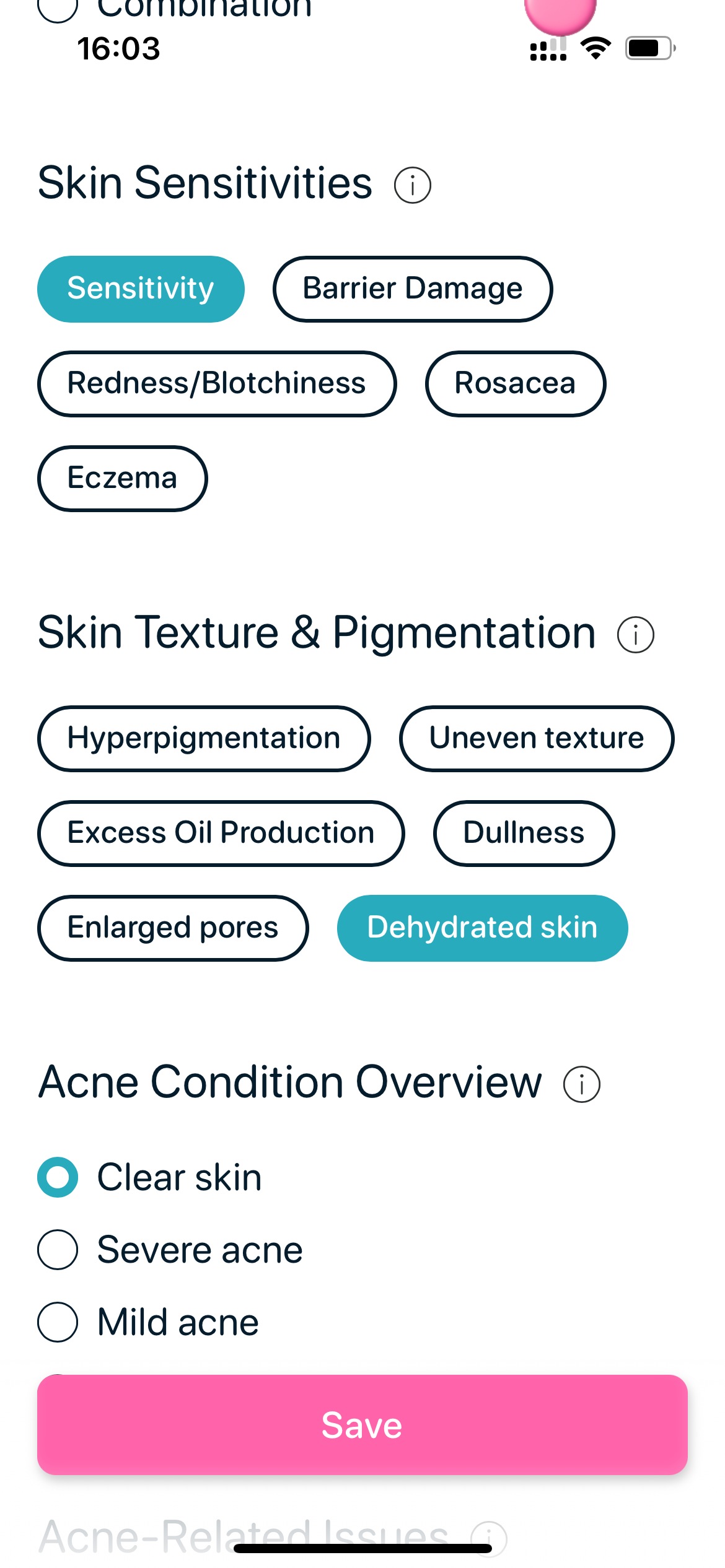
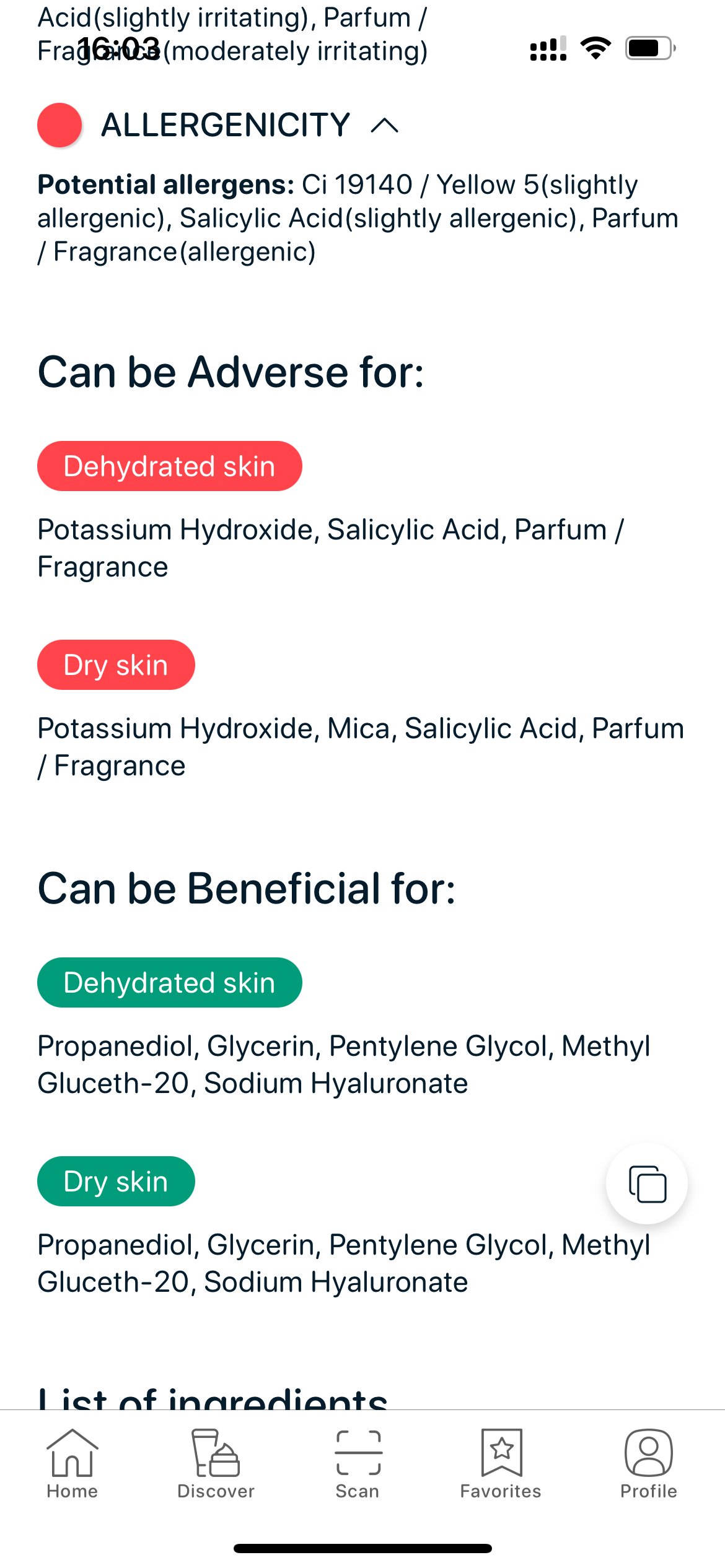
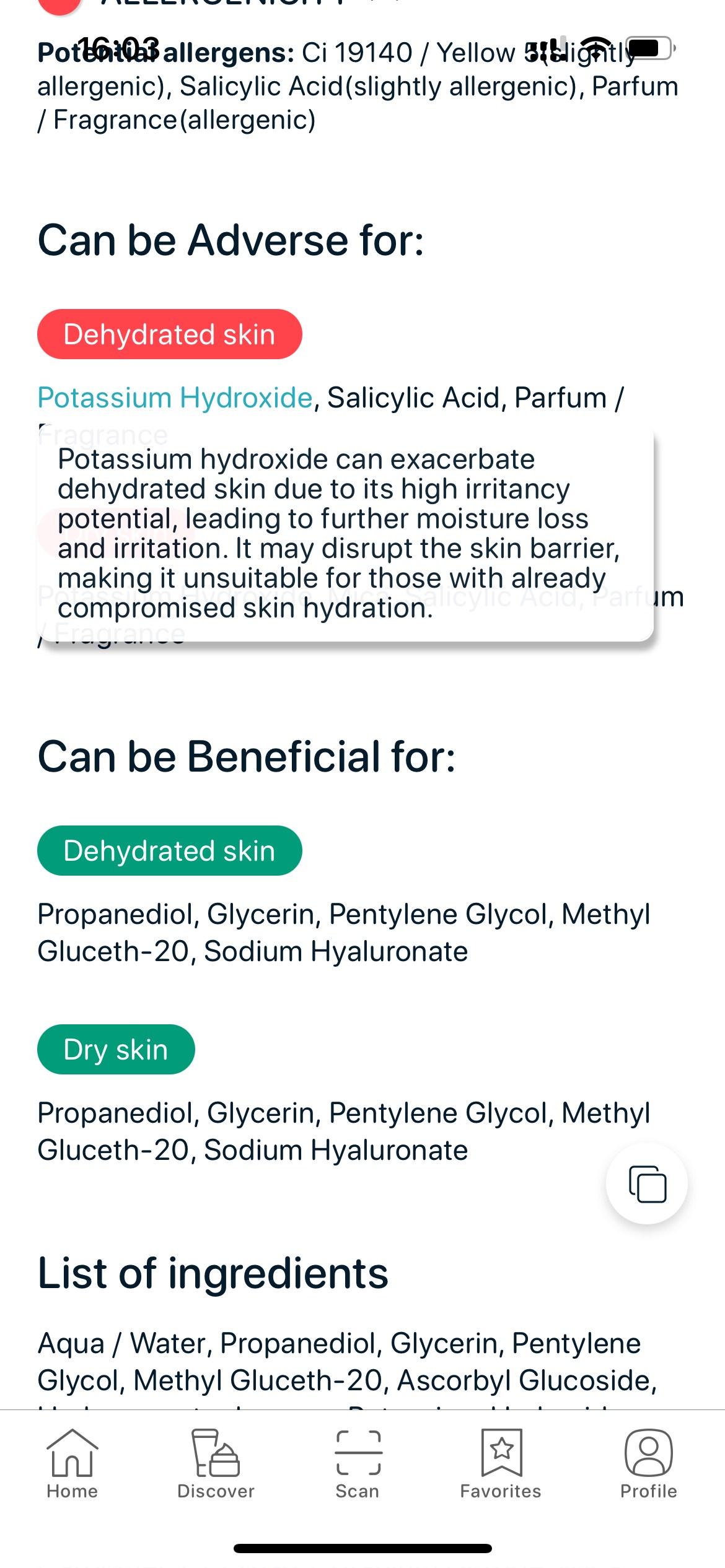
Try SkinBuddy to find out what works for your skin, and what doesn’t.
Scan your skincare, avoid pore-clogging or irritating ingredients, and discover smarter product matches. Open the web app or download the mobile app to get started.
Open SkinBuddy Web Appor
Check if your skincare suits your skin type, sensitivity, or acne-prone needs at skinbuddy.app and discover better options that match your routine and goals. SkinBuddy makes it easy, fast, and science-backed.
Scan to get started:

Web App (mobile only)

App Store & Google Play
FAQs About Dry vs. Dehydrated Skin
-
Can I have both dry and dehydrated skin?
Yes! Many people have both — a lack of natural oils and a lack of water. In this case, layer hydrating serums under nourishing creams. -
How long does it take to fix dehydration?
You can often see improvements within a week of using humectant-rich products and avoiding harsh cleansers. -
Can oily skin be dehydrated?
Absolutely. Dehydrated oily skin often produces more oil to compensate for lack of moisture. -
What’s the best moisturizer for dehydrated skin?
Look for formulas with hyaluronic acid, glycerin, and ceramides — light yet hydrating. -
How do I know if my products are worsening my dryness?
Use SkinBuddy’s scanning feature — it flags drying alcohols, sulfates, or fragrance compounds that can strip moisture.
Final Thoughts
Understanding the difference between dry and dehydrated skin is the key to transforming your complexion. Dry skin needs oils and barrier support, while dehydrated skin needs hydration and humectants.
If you’ve been struggling to find products that truly work, the solution might not be more moisturizer — it might be the right kind of one.
With SkinBuddy, you can easily identify what your skin really needs. Whether it’s adding humectants, restoring lipids, or avoiding drying ingredients, SkinBuddy helps you create a balanced, effective routine for lasting skin health.
👉 Want to know if your skincare is fixing dryness or making dehydration worse?
Download the SkinBuddy app and discover personalized solutions for your skin type and moisture balance.



